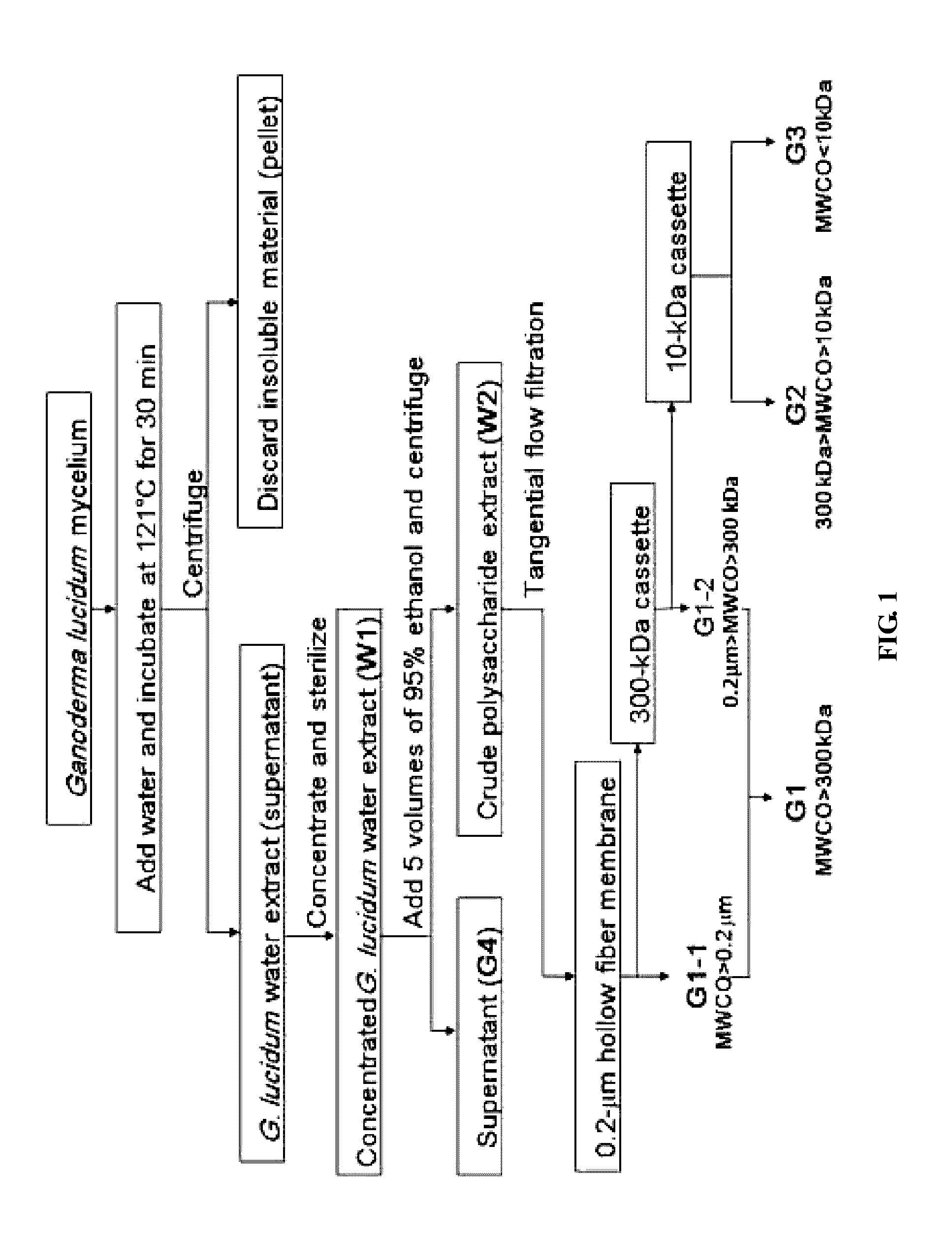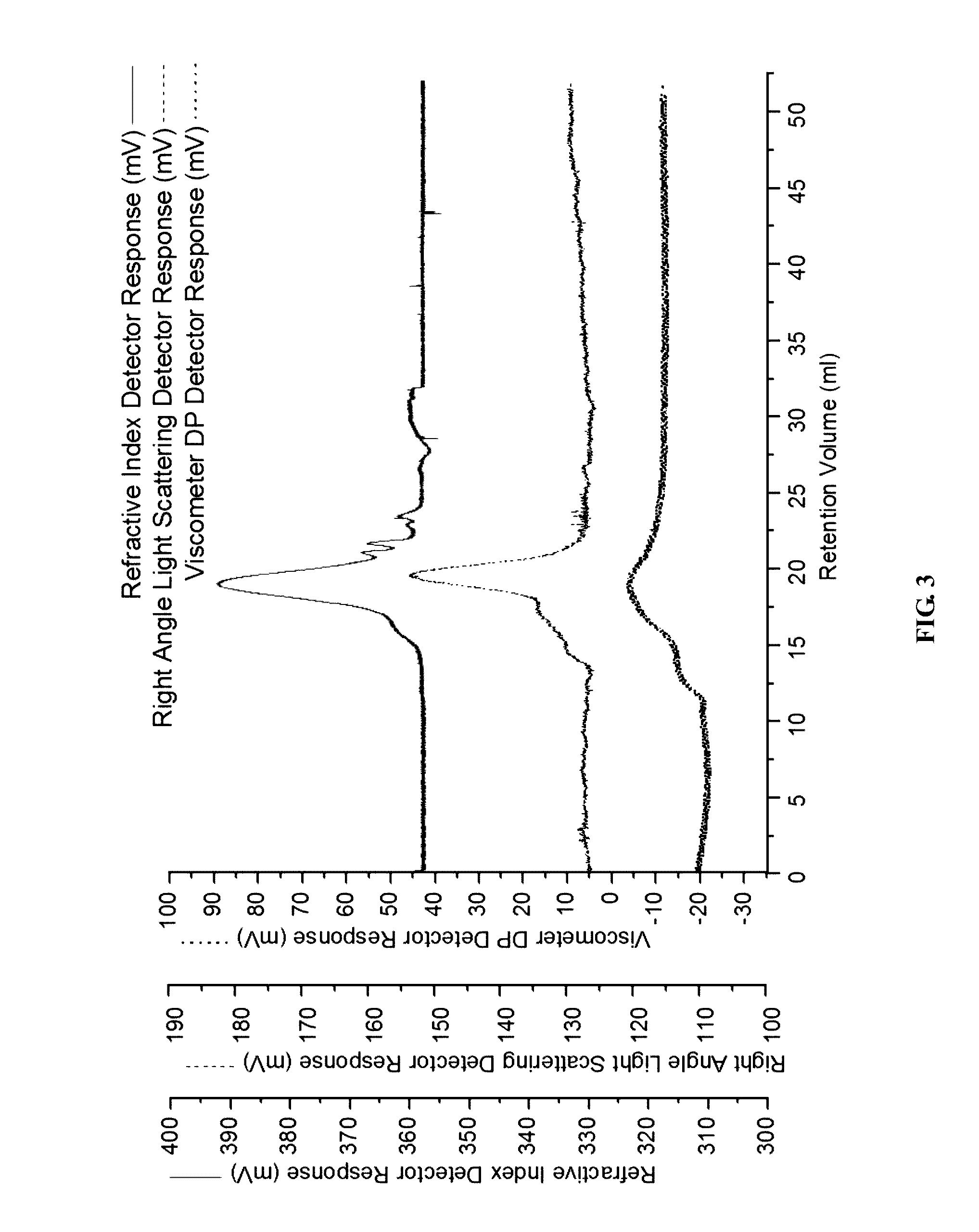Method to prepare ganoderma lucidum polysaccharides possessing insulin-sensitizing properties and applications thereof
a technology of ganoderma lucidum and polysaccharides, which is applied in the field of compositions and methods for improving insulin sensitivity, can solve the problems of eye damage, foot ulcers, and high prevalence of diabetes, and achieve the effects of reducing fasting serum insulin, fasting blood glucose, and insulin resistance levels
- Summary
- Abstract
- Description
- Claims
- Application Information
AI Technical Summary
Benefits of technology
Problems solved by technology
Method used
Image
Examples
example 1
Preparation of the Polysaccharide Extracts and Sub-Fractions Isolated from Ganoderma lucidum
[0027]According to the present invention, Ganoderma lucidum polysaccharide having a molecular weight above 135 kDa can effectively reduce hyperglycemia and promote insulin sensitivity in a subject. The G. lucidum polysaccharide of the present invention can be added to the diet of the subject as a drink, a daily supplement, or a food, without having to modify the existing lifestyle, or without incurring in toxicity or other unfavorable health conditions.
1.1 Preparation of G. lucidum Water Extracts
[0028]FIG. 1 illustrates the method used to isolate the polysaccharide from G. lucidum mycelium. Firstly, a water extract is prepared by mixing 500 g of dried G. lucidum mycelium obtained from Chang Gung Biotechnology (Taipei, Taiwan) with 10 liters of distilled water using a 20 liter-stirred tank reactor. The 5% (w / v) mixture is agitated at a speed of 150 revolutions per minute for 30 min at 121° C....
example 2
Effects of the Isolated G. lucidum Polysaccharide Sub-Fractions on Insulin Function in High-Fat Diet-Fed Mice
[0042]The effects of Ganoderma lucidum polysaccharide sub-fractions are tested on mice fed a high-fat diet (HFD), which is commonly used as a model to study insulin resistance and type 2 diabetes. C57BL / 6NCrlBltw mice are fed with either standard chow (13.5% of energy from fat) or HFD (60% of energy from fat) and treated daily with 100 μL of polysaccharide sub-fraction (G1, G2, G3, or G4) or distilled water by intragastric gavage for two months (n=5 mice for each group). The mouse groups comprise the following: HFD+G1, HFD+G2, HFD+G3, HFD+G4, HFD, Chow+G1, Chow+G2, Chow+G3, Chow+G4, and Chow. FIGS. 6A to 6D show the effects produced by the G. lucidum polysaccharide sub-fractions on fasting serum insulin, fasting blood glucose, HOMA-IR assessment (a measure of insulin resistance), and the oral glucose tolerance challenge.
[0043]As shown in FIGS. 6A and 6B, feeding with a HFD in...
PUM
| Property | Measurement | Unit |
|---|---|---|
| Fraction | aaaaa | aaaaa |
| Area | aaaaa | aaaaa |
| Dimensionless property | aaaaa | aaaaa |
Abstract
Description
Claims
Application Information
 Login to View More
Login to View More - R&D
- Intellectual Property
- Life Sciences
- Materials
- Tech Scout
- Unparalleled Data Quality
- Higher Quality Content
- 60% Fewer Hallucinations
Browse by: Latest US Patents, China's latest patents, Technical Efficacy Thesaurus, Application Domain, Technology Topic, Popular Technical Reports.
© 2025 PatSnap. All rights reserved.Legal|Privacy policy|Modern Slavery Act Transparency Statement|Sitemap|About US| Contact US: help@patsnap.com



